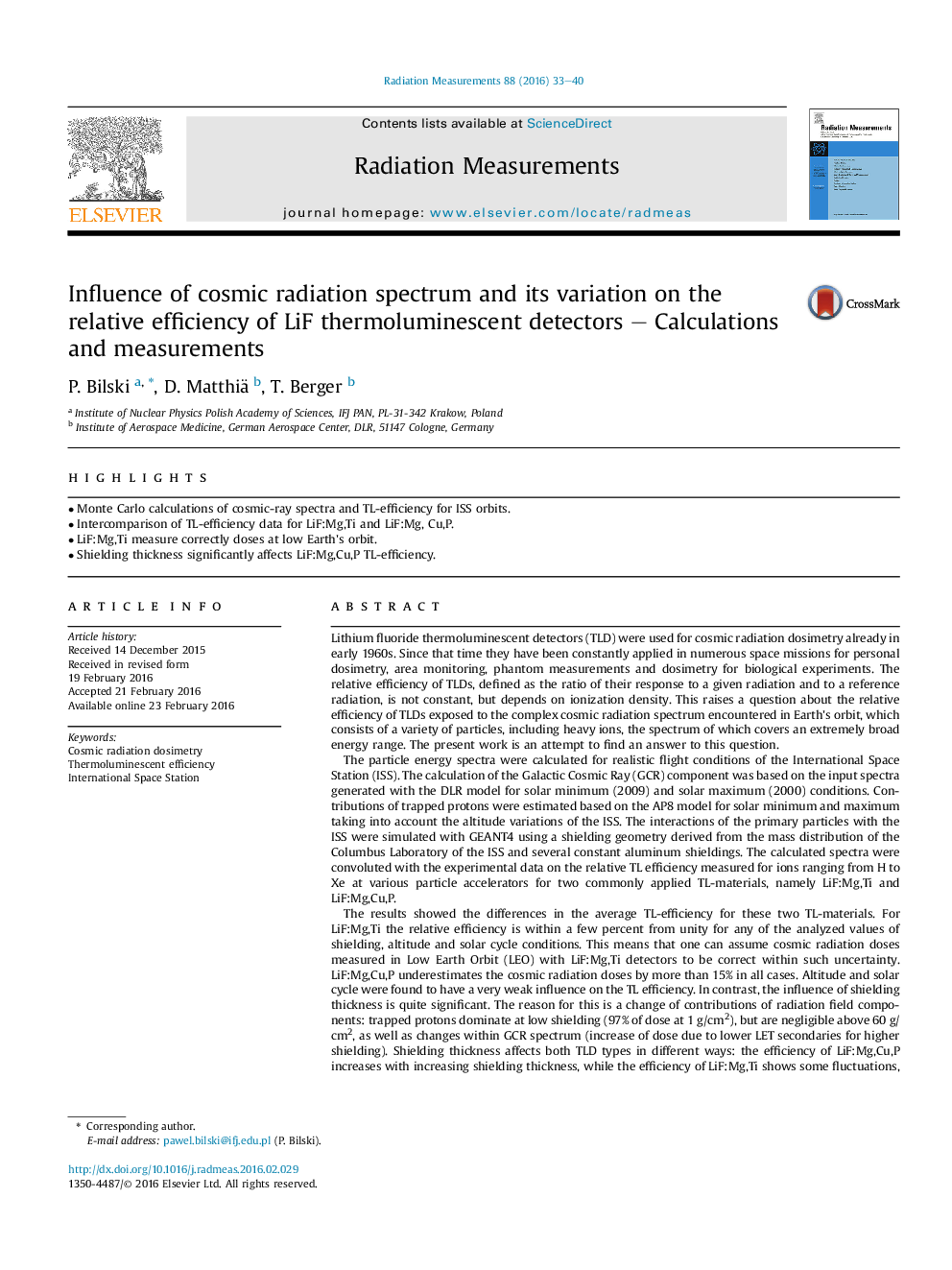| کد مقاله | کد نشریه | سال انتشار | مقاله انگلیسی | نسخه تمام متن |
|---|---|---|---|---|
| 1881187 | 1533402 | 2016 | 8 صفحه PDF | دانلود رایگان |
عنوان انگلیسی مقاله ISI
Influence of cosmic radiation spectrum and its variation on the relative efficiency of LiF thermoluminescent detectors - Calculations and measurements
دانلود مقاله + سفارش ترجمه
دانلود مقاله ISI انگلیسی
رایگان برای ایرانیان
موضوعات مرتبط
مهندسی و علوم پایه
فیزیک و نجوم
تشعشع
پیش نمایش صفحه اول مقاله

چکیده انگلیسی
The results showed the differences in the average TL-efficiency for these two TL-materials. For LiF:Mg,Ti the relative efficiency is within a few percent from unity for any of the analyzed values of shielding, altitude and solar cycle conditions. This means that one can assume cosmic radiation doses measured in Low Earth Orbit (LEO) with LiF:Mg,Ti detectors to be correct within such uncertainty. LiF:Mg,Cu,P underestimates the cosmic radiation doses by more than 15% in all cases. Altitude and solar cycle were found to have a very weak influence on the TL efficiency. In contrast, the influence of shielding thickness is quite significant. The reason for this is a change of contributions of radiation field components: trapped protons dominate at low shielding (97% of dose at 1Â g/cm2), but are negligible above 60Â g/cm2, as well as changes within GCR spectrum (increase of dose due to lower LET secondaries for higher shielding). Shielding thickness affects both TLD types in different ways: the efficiency of LiF:Mg,Cu,P increases with increasing shielding thickness, while the efficiency of LiF:Mg,Ti shows some fluctuations, with a weak minimum for 60Â g/cm2. The response ratio of these TLDs decreases monotonically with the shielding thickness and could be used as an indicator for the average shielding conditions in which the TLDs were exposed.
ناشر
Database: Elsevier - ScienceDirect (ساینس دایرکت)
Journal: Radiation Measurements - Volume 88, May 2016, Pages 33-40
Journal: Radiation Measurements - Volume 88, May 2016, Pages 33-40
نویسندگان
P. Bilski, D. Matthiä, T. Berger,